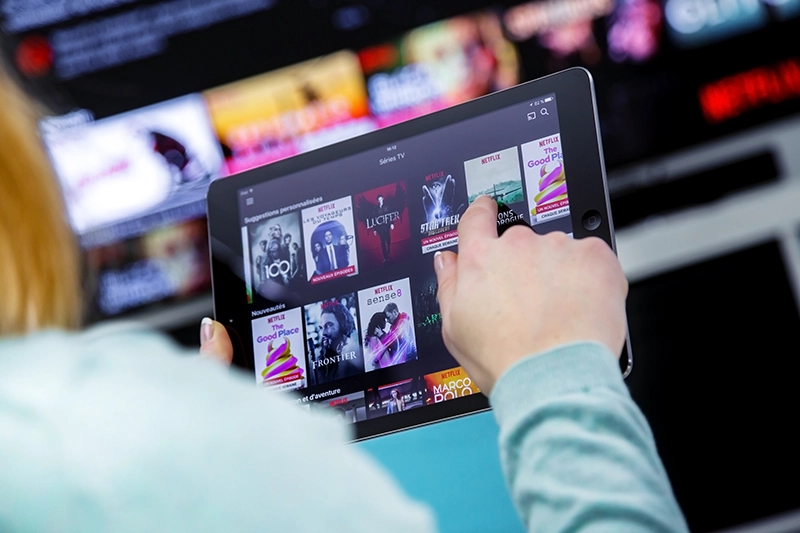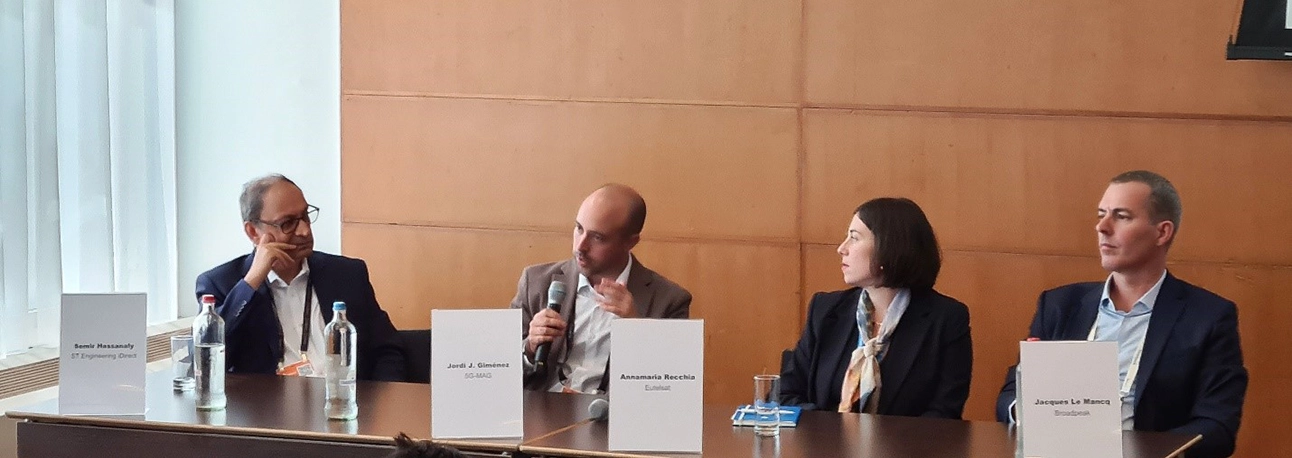At IBC 2022, we welcomed a panel of experts to join us at our ‘Sessions’ event and discuss The Bigger Picture of Video Streaming. The discussion was very insightful, and we wanted to make it available to those of you that were not at the event. Over the coming weeks, we will share the key questions and our panelists’ responses on the burning issues in this rapidly expanding market.
Joining us were (L-R): Semir Hassanaly, Head of Cellular Backhaul and Trunking, ST Engineering iDirect, Jordi J. Gimenez, Project Manager, 5G-MAG Association; Annamaria Recchia, VP, Commercial Development, Marketing and Product, Video, Eutelsat and Jacques Le Mancq, President & CEO Broadpeak
In this edition, we ask: What are the main challenges of video streaming?
Jacques: We’ve been in the business for 12 years and we have seen a big change in terms of streaming. When we started, in 2010, streaming was mainly for the small screen but it is now becoming mainstream. I believe that the main driver for this is Netflix and the massive growth in viewership that occurred during the pandemic when everybody was at home. Then, providers such as Disney+ brought out new set-top boxes, and streaming returned to the bigger screen. I see two main challenges facing streaming services today.

The second issue is the quality of service. This is linked to scalability. When we started out, we knew that we needed to equal broadcast quality, and today, this 4K quality is now available on streaming services. It’s perfectly possible to achieve high quality. However, if you have a tsunami of viewers, the quality degrades. It’s a big challenge to try to build that credibility and to ensure that you can retain the audience.
Annamaria: Telco and ISP providers have to catch up in order to absorb this traffic and technical solutions are needed to make this happen. There’s a problem with quality of experience, quality of services and latency and talks are ongoing in the streaming domain about how to cope with this latency issue. However, another very important point we tend to forget about is reach. According to an AI data survey, only 54% of households will be connected with fiber-to-the-home services by 2026. And this is referring to the EU and UK. We’re not talking about remote areas. It’s also a challenge in terms of monetization.
Semir Hassanaly: I will echo that. And these are problems that we are also seeing on terrestrial networks today. It’s not just on satellite.
Speaking of the impact of COVID on video streaming, we have an interesting use case where, because of the pandemic, teachers in remote regions were not able to reach out to their students. So how could they convey content from the teacher to the kids? The best and most cost-effective way to send content out to the children was over satellite. Using satellite also allowed scale. Instead of one teacher reaching one classroom, you could have one teacher reaching many classrooms. Satellite can answer the scalability and the issues of reach.
Jordi: I think what has happened is that OTT has expanded the flexibility in terms of service provisioning. In terms of the ability to launch new services, the amount of services offered to the user and also the quality of services we have today is something that was impossible to think about ten years ago.
I think one of the main challenges is to bring this type of experience to all users, regardless of the platform they are using so that service quality is guaranteed. Previously, platforms would know the capacity they had and the number of services that could be delivered. What’s happening today is that, with having fiber to the home, people have access via the Internet, to any service they wish. The question is, how do ISPs and Telcos provide users with the flexibility to use fiber, or switch to satellite when it makes sense, in a seamless way so that their users can access the services they want, whenever they want.
Watch this space for our next blog in this series, coming next week.
Read about the SKYflow ecosystem here.
